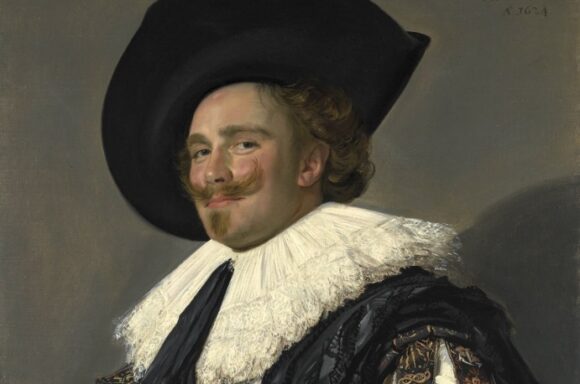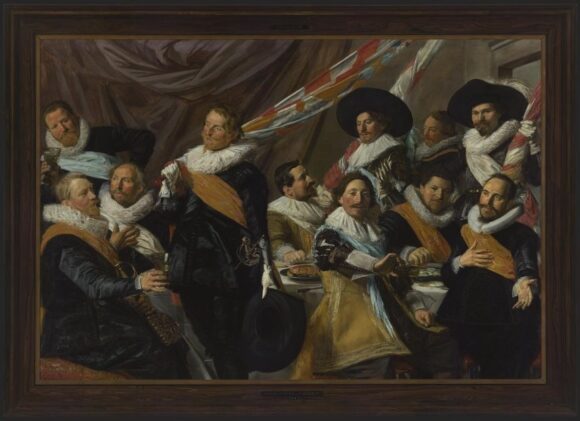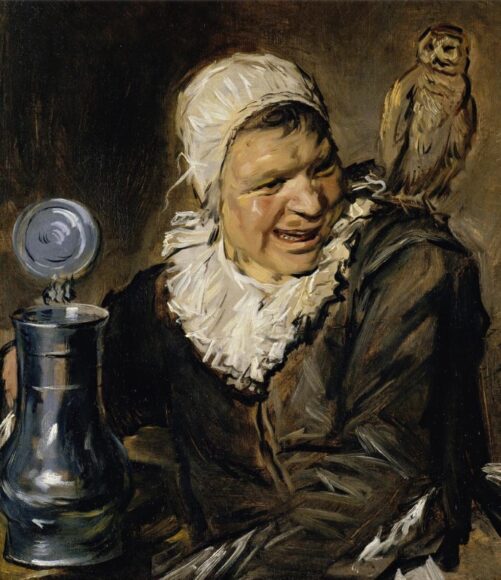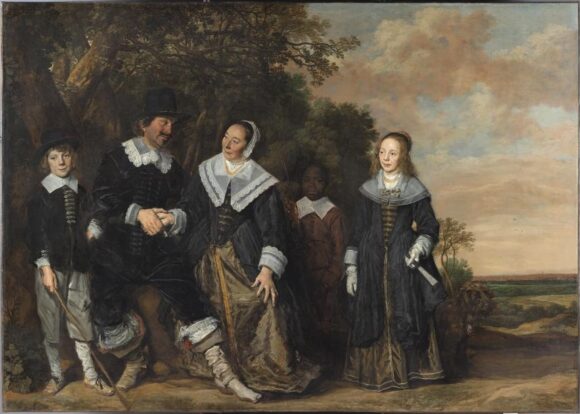
My advice to anyone visiting the rousing retelling of Frans Hals’s career that has arrived at the National Gallery is: lean in. As close as the guards will let you. Because that is where the magic happens.
Oil paints can be used prosaically, and they can be used with guts and bravura. Hals is spectacularly in the second camp. If he were a fencer, he’d be winning Olympic golds with his swishes, slices and thrusts. His speciality, old master portraiture, does not generally require such evident quickness.
For proof, I recommend a lean into his most famous painting, The Laughing Cavalier. Dutch portraiture is famed for its gloom: the self-abnegation of an unhappy nation. But the smirking cad stands out like a partygoer at a funeral. In today’s world he’d be handing us his car keys and telling us to park it. And just look at the arrogant upturn of his cocky moustache.
However, when you lean in, what really impresses — what will take your breath away if you are sensitive — is not his mood, but his clothes. The gorgeously embroidered doublet. The flickering whiteness of his huge ruff. The brilliantly described sash around his waist in which Van Gogh counted 27 shades of black. All recorded at top speed.
Hals was born in Antwerp in about 1582 — no one is certain of the date — and died in Haarlem in 1666. That’s a life of about 80 years. So there’s masses of achievement to get through.

Strangely, though, and rather excitingly, his beginnings are mysterious. The first portraits in this display were made in the 1610s when he was about 30. They are immediately impressive, immediately Halsian. Yet nothing earlier by him has been found. Somewhere out there the first ten years of his career are playing hide and seek.
Unlike Rembrandt, his only challenger when it came to 17th-century Dutch skills, Hals was exclusively a portraitist. He came to attention with his noisy groups. Nothing in portraiture is as difficult to do well as the group. Imagine having to fit into a single composition 20 faces, each clamouring to be noticed — they all paid, they expect equal prominence — while still achieving a harmonious whole.
The National Gallery has borrowed a couple of fine examples to make the point. In particular, Banquet of the Officers of the St George Civic Guard, from the Frans Hals Museum in Haarlem, painted in 1627, lights up the room with its carousing mood, bold baroque rhythms and football team of alert faces. The guy at the front turns his glass upside down to emphasise its emptiness. The guy behind squeezes a lemon on to his oysters with a knowing look.
Stiffness is Hals’s enemy. Early in his career he painted a clutch of “genre scenes” of characterful types acting out fun roles: laughing, playing, drinking. The show devotes a room to this enchanting company. On the most obvious of levels, it allows colour to flood the event — red hats, red cheeks, crimson dresses.
But it isn’t only colours and moods that are set free by the fun genre scenes. So is Hals’s paintwork. Lean into Malle Babbe, the mad old woman with an owl on her shoulder, and you will see brushstrokes as clear and bold as the tracks left behind by a zigzagging skier on virgin snow.
Another room is filled with his small paintings. Working with tiny brushes, Hals had to miniaturise his fencing, but he couldn’t miniaturise the insouciance. Rocking back in his chair, the smirking Willem van Heythuysen cradles his riding crop like a man who’s got Miss Whiplash in his diary later that afternoon.

The show ahead is filled with an array of expressions you will not have seen in art before. People smirking, blushing, laughing, grinning crazily. A particularly engrossing gallery focuses on his wedding portraits: the pairs of hims and hers commissioned to celebrate a union. Painted on separate panels, yet interacting subtly across the divide, some of these couples are together for the first time in centuries, having been separated by a heartless art market.
In the dazzling portraits of Francois Wouters and Susanna Baillij, he tries dutifully to look assured, but she pins us to the wall with her arrow of a gaze. In Hals’s only double portrait, where hubby and wife share the same picture, Isaac Abrahamsz Massa leans back contentedly against a tree, while Beatrix van der Laen thrusts herself forwards with a fabulous smile, determined to make it her picture.

With almost everyone in Dutch portraiture who is not in a “genre scene” wearing black and white — black suits and dresses, white collars and gloves — Hals needed to become a master of monochromes. Examine the way he paints ruffs and cuffs and you will see an artist turning restriction into abundance.
Living to an old age gave him the chance to remain active for longer than most, but also left time for the sadness to grow. The last room, devoted to his final works, features some of his freest brushstrokes, but also his most sombre moods.
Regents of the Old Men’s Almshouse, a collection of old boys who looked after the poor in Haarlem, is as black and white as a silent movie. Except for the sudden splash of crimson that pops up in one of the pairs of foreground trousers, a lighting flash of unkillable excitement.
All this is told in exemplary fashion. I have one complaint: the catalogue. It’s so busy being pictorially adventurous it neglects to perform the basic service of listing and entitling the exhibits in a legible order. A speck of rain on a glorious parade.
Frans Hals, at the National Gallery, London WC2, until Jan 21
